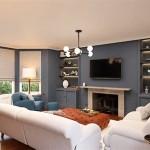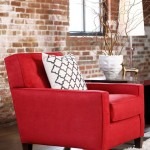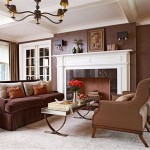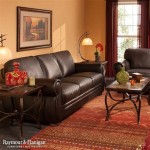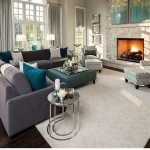How To Arrange A Living Room With Two Sofas
Arranging a living room with two sofas presents both opportunities and challenges. While two sofas offer ample seating and create a sense of balance, careful planning is essential to ensure the arrangement promotes conversation, facilitates traffic flow, and complements the room's architecture.
The first step in arranging two sofas involves assessing the room's dimensions and focal points. Measurements should be taken of the room's length, width, and ceiling height. Existing architectural features like fireplaces, large windows, or built-in shelving should be identified as these often serve as natural focal points. The placement of doorways and traffic patterns through the room should also be considered.
The next consideration is the intended function of the living room. Is it primarily for casual family gatherings, formal entertaining, or a combination of both? This will influence the arrangement of the sofas and other furniture pieces. A room designed for conversation might prioritize a close and intimate arrangement, while a room intended for entertaining might require more space for movement and additional seating.
Several common arrangements work well with two sofas. The facing sofas layout, where sofas are placed directly across from each other, is classic and encourages conversation. This setup is ideal for smaller, more intimate living rooms. A coffee table placed between the sofas provides a surface for drinks and other items. This arrangement requires sufficient space between the sofas for comfortable passage.
The L-shaped arrangement, with sofas placed perpendicular to each other, creates a more relaxed and open feel. This layout is well-suited for larger living rooms and can define distinct areas within the space. A corner table or ottoman can be used to fill the space created by the L shape and provide additional surface area.
Parallel sofas, placed side-by-side against the same wall, work best in long, narrow rooms. This setup maximizes seating along a wall, leaving the center of the room open for traffic flow. A console table placed behind the sofas can be used for lamps and decorative items.
The choice of sofa size and style plays a significant role in the overall arrangement. Oversized sofas can overwhelm a small room, while small sofas might appear lost in a larger space. Consider the scale of the room and choose sofas that are proportional to the space. The sofa style should also complement the overall aesthetic of the room.
Once the sofa arrangement is determined, attention should be given to the placement of other furniture pieces. Chairs, ottomans, and coffee tables should be arranged to complement the sofas and facilitate conversation. These pieces should be placed strategically to create a balanced and harmonious layout. Adequate space for movement between furniture should be maintained.
Lighting plays a crucial role in creating ambiance and functionality. A combination of ambient, task, and accent lighting is recommended. Overhead lighting provides general illumination, while table lamps and floor lamps offer focused light for reading or other activities. Accent lighting can highlight artwork or architectural features.
The use of rugs can help define different areas within the living room and anchor the furniture arrangement. A rug large enough to accommodate the front legs of the sofas and other furniture helps to create a cohesive and unified look. The rug’s size and pattern should be proportional to the room and complement the existing décor.
Accessorizing the living room with decorative elements adds personality and visual interest. Throw pillows, blankets, artwork, and plants can be used to enhance the room's aesthetic appeal and create a welcoming atmosphere. These elements should be carefully chosen to complement the overall design scheme and avoid clutter.
Incorporating vertical space is essential, especially in rooms with higher ceilings. Tall bookshelves, artwork, or decorative wall hangings can draw the eye upward and create a sense of height. This can also help to balance the horizontal lines created by the sofas and other furniture pieces.
Consider the traffic flow within the room. Furniture should be arranged in a way that allows for easy movement between different areas. Avoid placing furniture in areas that obstruct doorways or pathways. Sufficient space should be maintained between furniture pieces to facilitate comfortable navigation.
Finally, personal preferences and lifestyle should be considered when arranging a living room with two sofas. The ultimate goal is to create a space that is both functional and aesthetically pleasing, reflecting the individual needs and tastes of those who use it.
Regularly reassessing the living room arrangement can be beneficial. As needs and preferences change, the arrangement can be adjusted to better suit the current requirements. Flexibility in arranging the furniture allows for adapting to different situations and maximizing the room's potential.
:max_bytes(150000):strip_icc()/241281900_341192554361276_4065058603327637006_n-f219b7033f0146f688d84e34f18e2bed.jpg?strip=all)
How To Arrange Two Sofas In A Living Room

How To Arrange Two Sofas In Living Room

How To Do Parallel Sofas Living Room Arrangement Local Furniture Outlet

Your Guide To Arranging Two Sofas In Living Room Southern Motion

How To Do Parallel Sofas Living Room Arrangement Local Furniture Outlet
:strip_icc()/cdn.cliqueinc.com__cache__posts__83156__sofa-floor-plan-83156-1541029173548-image.700x0c-20587b695a1a4f80a7aec09198623f39.jpg?strip=all)
The Living Room And Sofa Layout That Works Every Time

Why You Should Arrange Two Identical Sofas Opposite Of Each Other Designed

Styling Secrets How To Arrange 2 Different Sofas In Your Living Room Torera George
:strip_icc()/cdn.cliqueinc.com__cache__posts__83156__sofa-floor-plan-83156-1541028531742-image.700x0c-190d4d98c1da44d681d1a43f264bf693.jpg?strip=all)
The Living Room And Sofa Layout That Works Every Time

5 Expert Tips On Arranging Two Sofas In The Living Room
See Also

